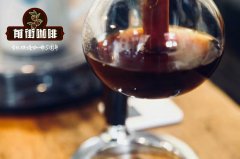Colombia coffee varieties castillo coffee beans where castillo coffee is good to drink

Professional coffee knowledge exchange more coffee bean information please follow the coffee workshop (Wechat official account cafe_style)
Because of the importance of coffee crops to the Colombian economy, Colombia has invested far more in scientific coffee research than in many coffee-producing countries. The National Coffee Research Centre of Colombia (Cenicafe), operated by the National Coffee growers' Federation (FNC), is one of the most important researchers in the world, developing coffee varieties to improve the living standards of farmers while maintaining the quality of coffee. The research center is responsible for many varieties developed in the country over the past 60 years.
Catura has been a very common breed in Colombia since at least the 1950s because it outproduces traditional Tibica or bourbon. However, although more production is given, it is also vulnerable to coffee leaf rust and other diseases.
Castillo, launched in 2005, takes its name from researcher Jaime Castillo, which is actually a trademark of Cenicafe. It is an improvement of the Colombian variety and has become the most cultivated variety in Colombia.
The Colombian variety was bred by Cenicafe after five generations between 1968 and 1982, which is the result of a successful cross between Katilra and Timor. Colombia developed before the country's first outbreak of coffee leaf rust in 1983. Although the new varieties have helped the country's farmers through the crisis, Cenicafe suspects that other disease outbreaks and new ones are just around the corner. They continue to work towards improvement, and at the beginning of the 21st century, the emergence of coffee berry disease (CBD) accelerated the development of research methods. The result of this painstaking effort is the breeding of Tabi and Castillo varieties.
In May 2005, "Castillo" was officially presented to coffee growers, a symbol of FNC's "Columbia Rust-Free" program. The project aims to restore and update the production of high-quality coffee in the country.
Cenicafe has also developed subvarieties from Castillo with the added benefit of being particularly adapted to specific agronomic and climatic differences in different parts of the country. Seven varieties have been Castillo so far, each retaining the main characteristics of their offspring (Catura cups of small mass and size and Timorese resistance to mixed coffee leaf rust) and adding one or more new features in each to adapt to specific climate change in Colombia. These varieties are: Castillo Naranjal, La Trinidad, El Rosario, Pueblo Bello, Santa Barbara, El Tambo and aicito.
Castillo and its offspring are characterized by high yields, resistance to leaf rust and other diseases, and "dwarf" trees that can be planted at high density, thus increasing yields per hectare. Castillo plants also have slightly larger fruits and are more resistant to pests and insects, such as the coffee drill beetle (broca), which is common in Latin America.
Although Castillo seems to have come up with a viable (current) solution to the coffee leaf rust crisis in Colombia, there have been disagreements over the quality of coffee cups. Many people in the coffee industry denigrate Castillo in terms of the quality of coffee cups (especially compared to Caturra). However, recent research by the Catholic Relief Service Frontier Project shows that these assumptions are often untenable in blind speculation. Although the two cups showed different characteristics they did not show a statistically significant difference in the average score in the test. The initial conclusion, though at an early stage, is that although the two are not interchangeable, one is not necessarily "better" than the other.
END
Important Notice :
前街咖啡 FrontStreet Coffee has moved to new addredd:
FrontStreet Coffee Address: 315,Donghua East Road,GuangZhou
Tel:020 38364473
- Prev

What is the variety of bourbon coffee? which coffee beans are more mellow? which coffee beans are divided into several kinds?
Professional coffee knowledge exchange more coffee bean information Please follow the coffee workshop (Wechat official account cafe_style) bourbon (red, yellow, orange) Modern coffee varieties come from two basic populations, Typica/ Tipica and Bourbon, both of which were advances in Yemen and spread around the world in the 18th century. Around 1715, some Arabica plants were introduced by the French to the Indian Ocean.
- Next

What kind of Coffee is Catimor? is catimor Coffee Arabica genetic background?
Professional coffee knowledge exchange more coffee bean information Please follow Coffee Workshop (Wechat official account cafe_style) Catimor was developed by scientists in Portugal in 1959 to find magic recipes for high yield, high disease resistance and small plants (that is, high-density cultivation). This variety is Diwen hybrid.
Related
- Beginners will see the "Coffee pull flower" guide!
- What is the difference between ice blog purified milk and ordinary milk coffee?
- Why is the Philippines the largest producer of crops in Liberia?
- For coffee extraction, should the fine powder be retained?
- How does extracted espresso fill pressed powder? How much strength does it take to press the powder?
- How to make jasmine cold extract coffee? Is the jasmine + latte good?
- Will this little toy really make the coffee taste better? How does Lily Drip affect coffee extraction?
- Will the action of slapping the filter cup also affect coffee extraction?
- What's the difference between powder-to-water ratio and powder-to-liquid ratio?
- What is the Ethiopian local species? What does it have to do with Heirloom native species?

